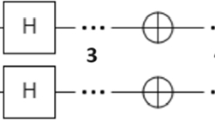Abstract
An investigation of nondisjunction inDrosophila hydei has disclosed that spontaneous primary nondisjunction of the X chromosomes occurs with a frequency of 1/13000, and secondary nondisjunction with a frequency of 1/3500. These rates are much lower than the ones previously reported forDrosophila melanogaster which are about 1/1000 for primary nondisjunction and 1/50 for secondary nondisjunction.
The low rate of secondary nondisjunction inhydei is attributed to the much greater genetic length of the X chromosome and the corresponding reduction in noncrossover X's available for distributive pairing with the Y chromosome.
The low rate of primary nondisjunction is attributed to both a reduction in noncrossover X chromosomes, and to the large heterochromatic arm of the X chromosome which, it is suggested, makes the X centromere a strong centromere. Thus, it is further suggested, the reduction in noncrossover chromosomes reduces the opportunity for nonhomologous distributive pairing and nondisjunction of the type involving noncrossover chromosomes. Nondisjunction of the type involving crossover chromosomes then is prevented by the success of the strong centromeres in overcoming “entanglements” that would lead to nondisjunction in the case of ordinary or weak centromeres.
Similar content being viewed by others
References
Bridges C. B. (1916). Non-disjunction as proof of the chromosome theory of heredity.Genetics 1: 1–52, 107–163.
Brown, M. W. (1940). The relation between chiasma formation and disjunction. Univ. Texas, Publ. 4032: 11–65.
Cooper, K. W. (1945). Normal segregation without chiasmata in femaleDrosophila melanogaster.Genetics 30: 472–484.
Cooper, K. W., S. Zimmering &J. Krivshenko (1955). Interchromosomal effects and segregation.Proc. Natl. Acad. Sci. U.S.41: 911–914.
Forbes, C. (1962). The effect of heterozygous inversions on primary nondisjunction inDrosophila melanogaster.Genetics 47: 1301–1311.
Grell, R. F. (1957). Nonrandom assortment of nonhomologous chromosomes.Genetics 42: 374 (abstr.).
Grell, R. F. (1962a). A new hypothesis on the nature and sequence of meiotic events in the female ofDrosophila melanogaster.Proc. Natl. Acad. Sci. U.S.48: 165–172
Grell, R. F. (1962b). A new model for secondary nondisjunction: The role of distributive pairing.Genetics 47: 1737–1754.
Grell, R. F. (1964). Distributive pairing: The size dependent mechanism for regular segregation of the fourth chromosomes inDrosophila melanogaster.Proc. Natl. Acad. Sci. U.S.52: 226–232.
Lindsley, D. L. &E. Novitski (1958). Localization of the genetic factors responsible for the kinetic activity of X chromosomes ofDrosophila melanogaster.Genetics 43: 790–798.
Lindsley, D. L. (1958). The meiotic behavior of grossly deleted X chromosomes inDrosophila melanogaster.Genetics 43: 547–564.
Merriam, J. R. &J. N. Frost (1964). Exchange and nondisjunction of the X chromosomes in femaleDrosophila melanogaster.Genetics 49: 109–122.
Novitski, E. (1952). The genetic consequences of anaphase bridge formation inDrosophila.Genetics 37: 270–287.
Ptashne, M. (1960). The behavior of strong and weak centromeres at second anaphase ofDrosophila melanogaster.Genetics 45: 499–506.
Roberts, P. (1962). Interchromosomal effects and the relation between crossing-over and nondisjunction.Genetics 47: 1691–1709.
Safir, S. R. (1920). Genetic and cytological examination of the phenomena of primary nondisjunction inDrosophila melanogaster.Genetics 5: 459–487.
Sandler, L. &G. Braver (1954). The meiotic loss of unpaired chromosomes inDrosophila melanogaster.Genetics 39: 365–377.
Spencer, W. P. (1930). Primary nondisjunction inDrosophila hydei.Ohio Jour. Sci. 30: 221–229.
Spieler, R. A. (1963). Genic control of chromosome loss and nondisjunction inDrosophila melanogaster.Genetics 48: 73–90.
Stern, C. (1927). Ein genetischer und zytologischer Beweis für Vererbung im Y-Chromosom vonDrosophila melanogaster.Zeitschr. f. ind. Abst. u. Vererbungsl. 44: 188–231.
Sturtevant, A. H. &G. W. Beadle (1936). The relations of inversions in the X chromosome to crossing over and disjunction.Genetics 21: 554–604.
Author information
Authors and Affiliations
Additional information
This investigation was supported in part by U.S. Public Health research grant GM 12093 and in part by a National Science Foundation research grant 14200.
Rights and permissions
About this article
Cite this article
Gregg, T.G., Day, J.W. Nondisjunction of the X chromosomes in females ofDrosophila hydei . Genetica 36, 172–182 (1965). https://doi.org/10.1007/BF01557152
Received:
Issue Date:
DOI: https://doi.org/10.1007/BF01557152




